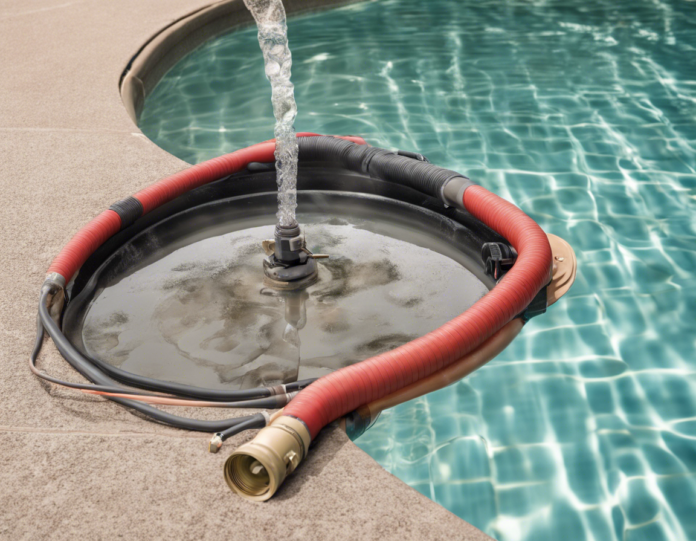Introduction
Having a pool in your backyard can be a delight during the hot summer months, but dealing with a leak can quickly turn a relaxing oasis into a headache. Pool leak detection is a crucial skill for any pool owner, as identifying and fixing leaks promptly can save both time and money in the long run. In this comprehensive guide, we will discuss the essential steps for pool leak detection to help you keep your pool in pristine condition.
Understanding Pool Leaks
Before diving into the detection process, it’s important to have a basic understanding of pool leaks. A pool leak can occur anywhere in the pool structure, including the walls, floor, fittings, or plumbing. Signs of a pool leak may include a drop in water level that is greater than regular evaporation, wet spots around the pool, or the need to frequently add water to maintain the proper level.
1. Conduct a Visual Inspection
The first step in pool leak detection is to conduct a thorough visual inspection of the pool and its surroundings. Look for any visible cracks, gaps, or damage in the pool structure. Pay close attention to the areas around fittings, lights, skimmers, and the pool pump.
2. Perform the Bucket Test
The bucket test is a simple yet effective way to determine if your pool is leaking. Fill a bucket with pool water to the same level as the pool. Place the bucket on the pool step or ledge so that it is immersed in the pool. Mark the water level inside the bucket and on the outside. After 24 hours, compare the water loss in the bucket to the pool water loss. If the pool loses more water than the bucket, you likely have a leak.
3. Use Dye Testing
Dye testing involves adding a few drops of dye near suspected leak areas and observing any movement. Turn off the pool pump and observe if the dye is drawn towards a particular area, indicating a leak. This method can help pinpoint the exact location of the leak for targeted repairs.
4. Check the Pool Equipment
Inspecting the pool equipment for leaks is another critical step in the detection process. Check for wet spots or drips around the pool pump, filter, heater, and pipes. A malfunctioning or damaged equipment can also contribute to water loss in the pool.
5. Pressure Testing
Pressure testing the pool’s plumbing system can help identify leaks in underground pipes. A professional can use specialized equipment to pressurize the plumbing lines and detect any drop in pressure, indicating a leak. This method is particularly useful for identifying hidden leaks that are not visible during a visual inspection.
Frequently Asked Questions (FAQs):
-
How common are pool leaks?
Pool leaks are relatively common and can be caused by various factors such as age, ground movement, or improper installation. -
What are the potential consequences of ignoring a pool leak?
Ignoring a pool leak can lead to further damage to the pool structure, increased water bills, and potential mold or mildew growth. -
Can I fix a pool leak myself?
Small leaks such as minor cracks or gaps may be repaired by the homeowner using pool repair kits. However, for complex leaks or plumbing issues, it’s best to seek professional assistance. -
How much does pool leak detection cost?
The cost of pool leak detection can vary depending on the method used and the extent of the leak. On average, expect to pay between $100 to $500 for professional leak detection services. -
Are there preventive measures to reduce the risk of pool leaks?
Regular maintenance, timely repairs, and proper water chemistry maintenance can help prevent pool leaks and prolong the lifespan of your pool. -
Is pool leak detection covered by homeowner’s insurance?
In some cases, homeowner’s insurance may cover the cost of pool leak detection and repairs if the leak is sudden, accidental, or due to a covered peril. It’s advisable to check with your insurance provider for specific coverage details. -
How long does pool leak detection take?
The time taken for pool leak detection can vary depending on the size of the pool, the complexity of the leak, and the detection method used. In general, it can take anywhere from a few hours to a couple of days to detect and repair a pool leak. -
What are the most common areas in a pool where leaks occur?
Common areas where pool leaks occur include the pool shell, skimmer, lights, returns, pool plumbing, and fittings. Regular inspection of these areas can help in early detection of leaks. -
Can weather conditions impact pool leak detection?
Weather conditions such as heavy rain or high humidity can affect pool leak detection results. It’s advisable to perform leak detection during dry weather for accurate assessment. -
How often should pool leak detection be performed?
It is recommended to conduct pool leak detection at least once a year as part of routine pool maintenance. Additionally, if you notice any sudden drops in water level or signs of a leak, prompt inspection is advised.
In conclusion, pool leak detection is a crucial aspect of pool maintenance that should not be overlooked. By following the essential steps outlined in this guide and staying proactive in monitoring your pool for leaks, you can ensure a well-maintained and leak-free pool for years to come.












